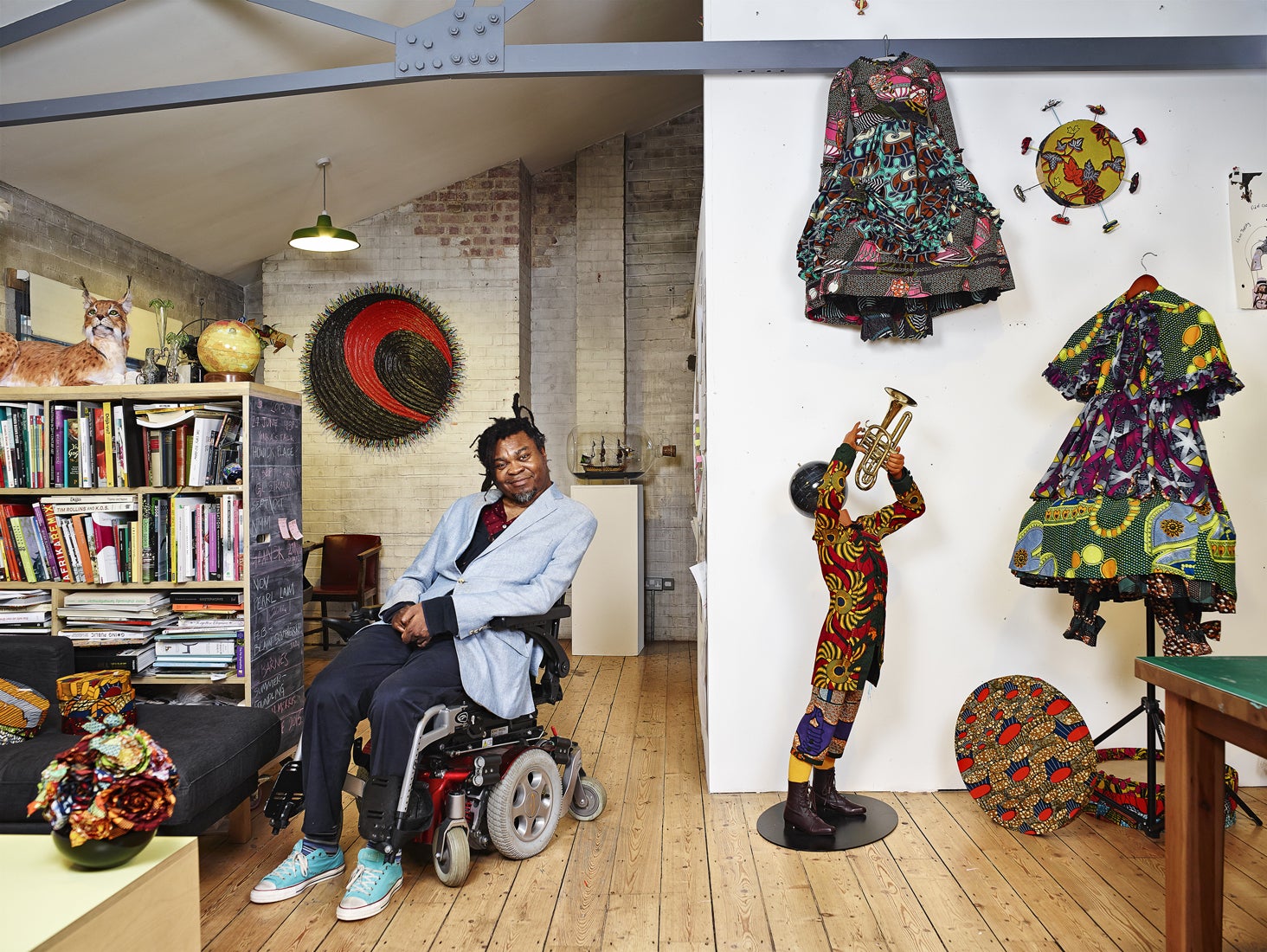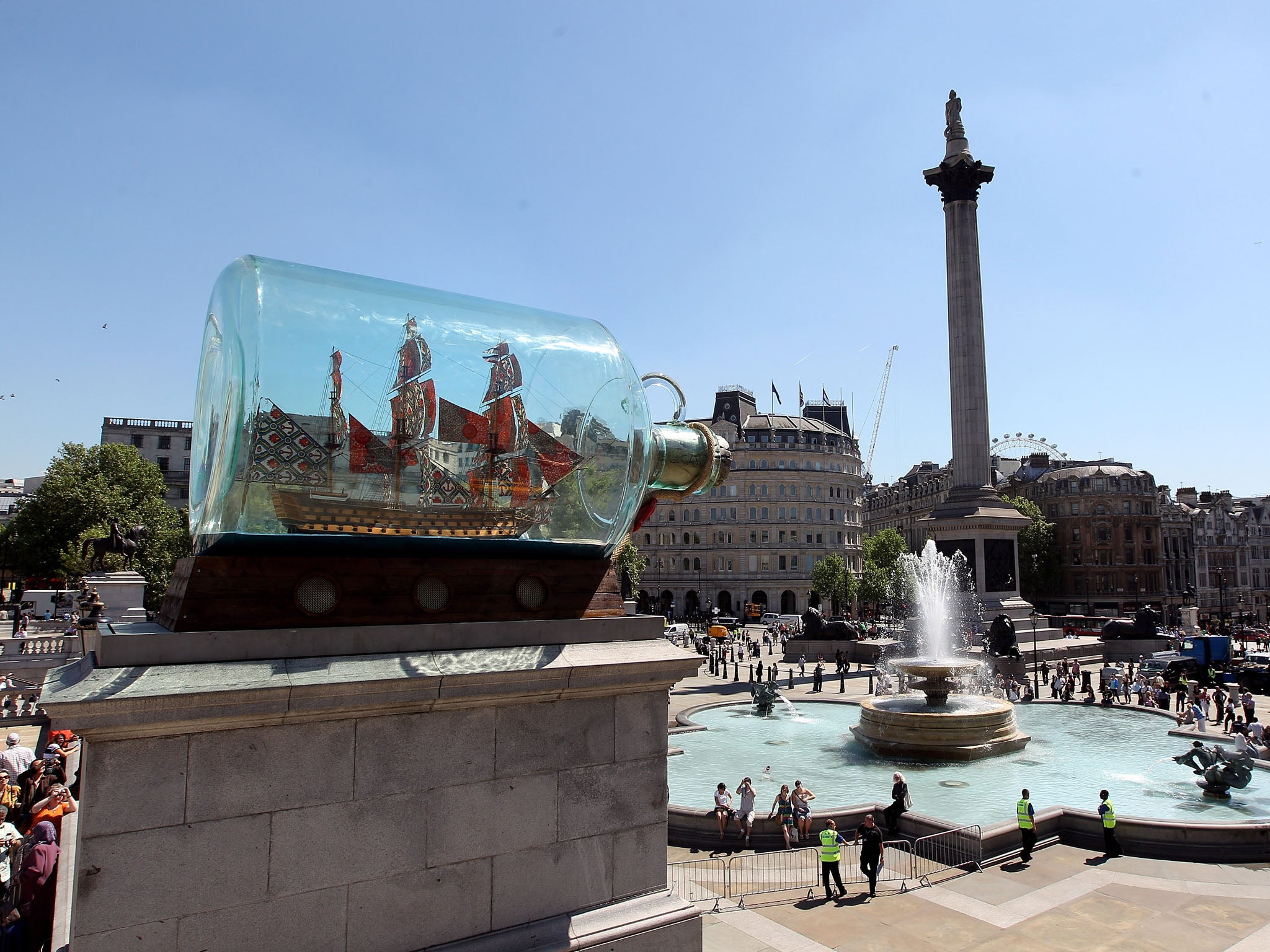Yinka Shonibare on his new show celebrating African art: 'Some kind of global African solidarity is necessary'
The British-Nigerian artist' new exhibition Talisman in the Age of Difference features works by Lubaina Himid, Kehinde Wiley, and Marlene Dumas

Your support helps us to tell the story
From reproductive rights to climate change to Big Tech, The Independent is on the ground when the story is developing. Whether it's investigating the financials of Elon Musk's pro-Trump PAC or producing our latest documentary, 'The A Word', which shines a light on the American women fighting for reproductive rights, we know how important it is to parse out the facts from the messaging.
At such a critical moment in US history, we need reporters on the ground. Your donation allows us to keep sending journalists to speak to both sides of the story.
The Independent is trusted by Americans across the entire political spectrum. And unlike many other quality news outlets, we choose not to lock Americans out of our reporting and analysis with paywalls. We believe quality journalism should be available to everyone, paid for by those who can afford it.
Your support makes all the difference.Can political art be beautiful? Can beauty itself be a form of resistance? These are some of the questions posed by the British-Nigerian artist Yinka Shonibare in a new exhibition he has curated at the Stephen Friedman Gallery in London.
The exhibition, Talisman in the Age of Difference, features works by artists mostly of African origin, ranging from rising talent to established players. Those with work in the show include the 2017 Turner Prize winner, Lubaina Himid; Kehinde Wiley, who recently painted Barack Obama for the National Portrait Gallery in Washington; the Egyptian artist Ghada Amer; and Marlene Dumas from South Africa.
Shonibare is known for sculptures and installations that engage with the history of colonialism and globalisation. He is a member of the Royal Academy of Arts, and, in his work, he has restaged classic 18th century paintings with headless mannequins wearing brightly coloured, African prints. In 2012, he installed a giant ship in a bottle on the empty fourth plinth in Trafalgar Square in London that also featured richly patterned, African-style textiles for the vessel’s sails.

Shonibare said that the exhibition was a reaction to “the resurgence of extreme right-wing politics and xenophobia across the globe” and in the spirit of African resistance.
Here are edited extracts from a conversation with the artist at his studio in North London in May.
You’re known as an artist, but this show puts you in the curator’s chair. How did it come about?
The start of this project was actually based on a show I did at the Royal Academy in 2017. That show coincided with the Black Lives Matter protests in the United States. And I felt very strongly that, despite the various achievements – the civil rights movement, Obama getting into power – that the battle had not actually been won. I was talking to the gallery and they said they really liked what I’d done at the RA, and can I do something along similar lines? They know how I feel about the sheer racism that’s re-emerged.
I work in the United States quite a bit. And I’m shocked by what’s emerging. America, for me is a kind of global, diverse continent; the whole thing was made from migrants, so it’s very shocking to see. I love America, I really do. So I’m alarmed.
I also wanted to globalise the issue. I wanted to raise the fact that Western art owes a hell of a lot to African aesthetics. Where would Picasso be without the encounter with African art? Where would many Modernist European artists be? And, most important, I was also thinking about, when I was young in Nigeria, there was a festival of black arts, Festac ’77. It was in 1977.
Yes, I remember that, too. Festac ’77: The Second World Black and African Festival of Arts and Culture in Lagos, Nigeria. Stevie Wonder was there, Gilberto Gil from Brazil, Miriam Makeba from South Africa, and so forth.
There was a kind of Africanism that was global in the Seventies. I just felt there’s been a kind of rupture in that global African unity, that it’s become much more fractured. It wasn’t the kind of feeling that I had when I was young.
I grew up in Nigeria. Growing up in Africa, there is a dignity about blackness. But then coming to Europe and then encountering racism for the first time, I was kind of confused and baffled by that. It took me a while to unravel what that actually meant. Then I came across Frantz Fanon, Black Skin, White Masks, deconstruction and representation, and those were the kinds of things that started the journey for me: that actually there is a black aesthetic, but not just in relation to empire.
I remember when I first saw your art years ago. The works were very witty; they made me smile. There was also their transgressive power. All of that is still there, and in the show, too. But do you think that something has changed?
I think we kind of fell asleep. I think apathy sets in. When Obama got into power, people started talking about “post-black”. There seems to be a kind of backlash that’s happened, a horrible one. What’s happened in the US, with the marches in Charlottesville, that was hair-raising. Horrific. I felt that it kind of crushed my self-esteem when I watched it.
What do you mean when you say that?
I felt that it reduced me to worthlessness. I’m even more alarmed that people are not raising hell in the US. When you see this type of thing, you can’t let it go. I think that any normal society would be shocked by this. And people have become so desensitised to these things that it really just doesn’t seem to matter anymore.
People will ask, “Why is a show from the African diaspora necessary now?” I feel that in the current climate, we have to assert our history. We should not be embarrassed or feel ashamed of our ancestors. Empowerment comes from acknowledging difference.
Is there a big difference between the artists from the African diaspora and those working on the continent?
All art is framed. There are people who make work with local sensibilities and there are people who make work with international sensibilities. And those people who can be located in both those spheres. But the differences are not always clear. Somebody may be living in London, they may be obsessed with African culture and African imagery and then end up making work, and you may not exactly know where they live.
And that’s a good thing?
I think it’s a good thing. I started by saying that I regret that black activism does not seem as international as it was in the Seventies. People can’t see that there is anything beyond their own circumstances, or outside their own circumstances.
The reason for this show is affirming visibility on a global scale. There are artists here that live in Africa, and there are artists that live in the United States, and I think that some kind of global African solidarity is necessary. And through culture – dancing, writing, whatever you can do – it’s important to celebrate.
‘Talisman in the Age of Difference’ is at Stephen Friedman Gallery, London until 21 July
© The New York Times
Join our commenting forum
Join thought-provoking conversations, follow other Independent readers and see their replies
Comments